2008
 This article draws on the need to examine the ways new media and visual technologies affect the representation of ghosts in contemporary Asian horror film, in effect producing a new variety of spirits.These new spirits materialise within photographic and video images, transmit themselves through television frequency waves, become embedded in an electronic code, scramble the signal of video surveillance cameras, clone themselves using cellular technologies, replicate through text messages and emails, hack computer systems and infect the cyberspace better than any computer viruses known to man. No longer wrapped in proverbial bedsheets and clinking chains, these new ghosts call for a redefinition of certain concepts that Gothic and Horror have learnt to take for granted.
This article draws on the need to examine the ways new media and visual technologies affect the representation of ghosts in contemporary Asian horror film, in effect producing a new variety of spirits.These new spirits materialise within photographic and video images, transmit themselves through television frequency waves, become embedded in an electronic code, scramble the signal of video surveillance cameras, clone themselves using cellular technologies, replicate through text messages and emails, hack computer systems and infect the cyberspace better than any computer viruses known to man. No longer wrapped in proverbial bedsheets and clinking chains, these new ghosts call for a redefinition of certain concepts that Gothic and Horror have learnt to take for granted.

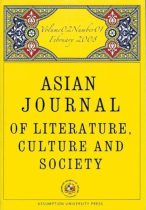
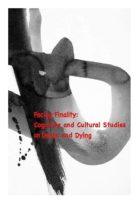
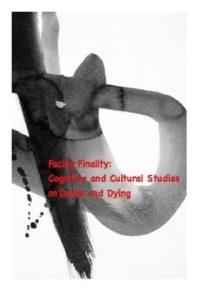 This article focuses on the popular representation of the afterlife, or our belief in such, as embodied in the idea of a ghost, a revenant, or a spectre, or in other words, the spirit of the deceased, as contrasted with the more animistic spiritual beings epitomising the powers of the natural world. For the lack of suitable research materials, the paper is geographically limited to the areas influenced by the major religious systems of beliefs, out of which Christianity (particularly Catholicism), Buddhism and Taoism seem to be particularly spirit-friendly, and to the areas culturally abounding in literary and cinematic representations of the spiritual encounters between the living and the dead. At the time when inter-cultural communication has become a hot topic to discuss, we become aware that even the dead are expected to resolve their cultural differences. One way to bring harmony to the culturally diverse world of contemporary spirits, as this paper suggests, is to see them as subject to the same process of globalisation and informatization as the living.
This article focuses on the popular representation of the afterlife, or our belief in such, as embodied in the idea of a ghost, a revenant, or a spectre, or in other words, the spirit of the deceased, as contrasted with the more animistic spiritual beings epitomising the powers of the natural world. For the lack of suitable research materials, the paper is geographically limited to the areas influenced by the major religious systems of beliefs, out of which Christianity (particularly Catholicism), Buddhism and Taoism seem to be particularly spirit-friendly, and to the areas culturally abounding in literary and cinematic representations of the spiritual encounters between the living and the dead. At the time when inter-cultural communication has become a hot topic to discuss, we become aware that even the dead are expected to resolve their cultural differences. One way to bring harmony to the culturally diverse world of contemporary spirits, as this paper suggests, is to see them as subject to the same process of globalisation and informatization as the living.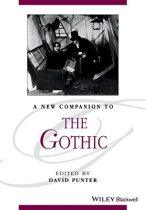
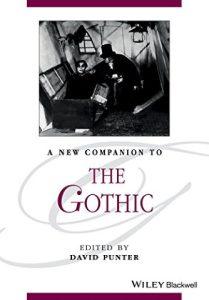 This article is my early attempt at theorising Asian Gothic. Far from offering the complete picture, it should rather be treated as an exploratory journey through some potentially gothic territories of Asian literatures. The article is limited to a part of Asia only, focusing on East, South-East and South Asia with the exclusion of Japan (as Japanese Gothic is discussed separately in the collection). The texts discussed here will only provide the reader with a very sketchy idea of the gothic dimensions of the region but hopefully this can serve as a starting point for further ruminations on the subject.
This article is my early attempt at theorising Asian Gothic. Far from offering the complete picture, it should rather be treated as an exploratory journey through some potentially gothic territories of Asian literatures. The article is limited to a part of Asia only, focusing on East, South-East and South Asia with the exclusion of Japan (as Japanese Gothic is discussed separately in the collection). The texts discussed here will only provide the reader with a very sketchy idea of the gothic dimensions of the region but hopefully this can serve as a starting point for further ruminations on the subject.
 S.P. Somtow’s novel The Other City of Angels (2008) portrays Bangkok as a Gothic metropolis: a city stuck between illusion and reality, where dreams and nightmares come to life, simultaneously backwards and modern, spiritual and material, and full of peculiarities that make one doubt whether such a place exists at all. It is a temple to consumerism filled with fortune tellers and high society serial killers that for Somtow, a composer himself, can best be expressed through the jarringly haunting sounds of Béla Bartók’s music. The Other City of Angels (2008) is a modern retelling of the Gothic tale of Bluebeard’s wife and her fatal discovery of her husband’s dark secret, and – true to its Gothic origins – it is filled with romance, terror, and laughter. This paper focuses on the novel’s comic dimension and discusses Somtow’s use of dark humour and the Gothic grotesque as a strategy to exoticize Bangkok for foreign readers by simultaneously reinforcing and defying Western stereotypes of Bangkok as the Oriental city, once (in)famously described as the city of temples and prostitutes. The paper also explores the way comic elements are used to offset the critical commentary on class division and social inequality that are seen as ingrained in the fabric of Thai culture and further aggravated by the materialism and consumerism characteristic of contemporary Thai society.
S.P. Somtow’s novel The Other City of Angels (2008) portrays Bangkok as a Gothic metropolis: a city stuck between illusion and reality, where dreams and nightmares come to life, simultaneously backwards and modern, spiritual and material, and full of peculiarities that make one doubt whether such a place exists at all. It is a temple to consumerism filled with fortune tellers and high society serial killers that for Somtow, a composer himself, can best be expressed through the jarringly haunting sounds of Béla Bartók’s music. The Other City of Angels (2008) is a modern retelling of the Gothic tale of Bluebeard’s wife and her fatal discovery of her husband’s dark secret, and – true to its Gothic origins – it is filled with romance, terror, and laughter. This paper focuses on the novel’s comic dimension and discusses Somtow’s use of dark humour and the Gothic grotesque as a strategy to exoticize Bangkok for foreign readers by simultaneously reinforcing and defying Western stereotypes of Bangkok as the Oriental city, once (in)famously described as the city of temples and prostitutes. The paper also explores the way comic elements are used to offset the critical commentary on class division and social inequality that are seen as ingrained in the fabric of Thai culture and further aggravated by the materialism and consumerism characteristic of contemporary Thai society.
 This paper offers a reading of Anjaan: SCU as an example of Gothic television placed in the context of Globalgothic. The article situates Anjaan: SCU within a larger body of supernatural detective series, the genre that has contributed significantly to Asian television’s global presence, investigates the gothic themes employed in the creation of the show, both in terms of its narrative strategies and visual aesthetics, and examines the social construction of ghosts in the series. The article argues that the narrative structure of the show operating across legal and mythical dimensions serves a didactic purpose and that these modern reconfigurations of Indian ghost lore aim to dispense social critique and address controversial local issues, such as caste-based inequality, female infanticide, or ‘honour’ killings.
This paper offers a reading of Anjaan: SCU as an example of Gothic television placed in the context of Globalgothic. The article situates Anjaan: SCU within a larger body of supernatural detective series, the genre that has contributed significantly to Asian television’s global presence, investigates the gothic themes employed in the creation of the show, both in terms of its narrative strategies and visual aesthetics, and examines the social construction of ghosts in the series. The article argues that the narrative structure of the show operating across legal and mythical dimensions serves a didactic purpose and that these modern reconfigurations of Indian ghost lore aim to dispense social critique and address controversial local issues, such as caste-based inequality, female infanticide, or ‘honour’ killings.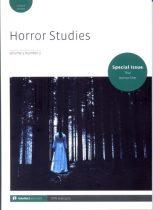
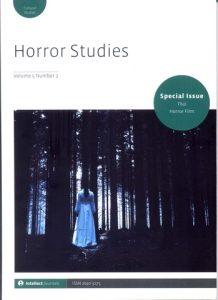 While folk horror has never been identified as exclusive to western cinema, most studies of the topic have so far been strongly aligned with western world-views, philosophies and methodologies. This makes it difficult to apply their findings to films made in non-Christian non-western countries, such as Thailand. This article discusses Banjong Pisanthanakun’s film Rang Song (The Medium) (2021) as a case in point to demonstrate how folk horror operates as a mode in Thai cinema. Building on the existing studies and modifying the current definitions of folk horror to apply them to the Thai cultural context, the article argues that Thai folk horror narratives are steeped in representations of the urban–rural divide that pit metropolitan Bangkok against low-income provinces (in particular, the northeastern region of Isan) and reflect on cultural tensions related to ethnicity and class.
While folk horror has never been identified as exclusive to western cinema, most studies of the topic have so far been strongly aligned with western world-views, philosophies and methodologies. This makes it difficult to apply their findings to films made in non-Christian non-western countries, such as Thailand. This article discusses Banjong Pisanthanakun’s film Rang Song (The Medium) (2021) as a case in point to demonstrate how folk horror operates as a mode in Thai cinema. Building on the existing studies and modifying the current definitions of folk horror to apply them to the Thai cultural context, the article argues that Thai folk horror narratives are steeped in representations of the urban–rural divide that pit metropolitan Bangkok against low-income provinces (in particular, the northeastern region of Isan) and reflect on cultural tensions related to ethnicity and class.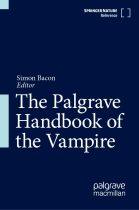
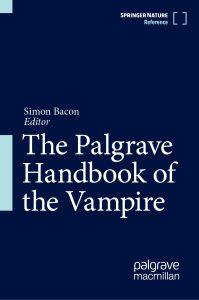 This article discusses the vampiric representation of the jiangshi in Hong Kong and Chinese cinema. The paper argues that while the jiangshi is a monstrous creature in its own right, over the years it has undergone a number of changes to align it with Western vampires. The article begins with a brief discussion of the jiangshi as a literary trope introduced in Chinese stories of the strange, particularly those written during the Qing period. The paper then examines three major shifts in cinematic representation of the creature from its early appearances in the 1980s Hong Kong cinema where it is compared and contrasted with Western vampires, and its post-Handover evolution that follows two different trajectories – reinventing the jiangshi as a pan-Asian horror icon and utilizing it as a tool of the Chinese government anti-superstition propaganda.
This article discusses the vampiric representation of the jiangshi in Hong Kong and Chinese cinema. The paper argues that while the jiangshi is a monstrous creature in its own right, over the years it has undergone a number of changes to align it with Western vampires. The article begins with a brief discussion of the jiangshi as a literary trope introduced in Chinese stories of the strange, particularly those written during the Qing period. The paper then examines three major shifts in cinematic representation of the creature from its early appearances in the 1980s Hong Kong cinema where it is compared and contrasted with Western vampires, and its post-Handover evolution that follows two different trajectories – reinventing the jiangshi as a pan-Asian horror icon and utilizing it as a tool of the Chinese government anti-superstition propaganda.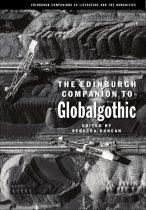
 This article discusses three major media forms that drive the globalisation of Asian Gothic: literature originally written in English, film, and original television series created specifically for global SVOD platforms like Netflix, Amazon Prime or HBO Go. The article focuses in more detail on three texts: a novel Ponti (2018) written by a Singaporean author Sharlene Teo, discussed in a larger context of texts featuring a Malay monster known as the pontianak; a Taiwanese film The Tag-Along (Cheng 2015) examined in relation to other East Asian films that feature forest-dwelling child-like spirits/demons that imitate human voice and lure their victims into the wilderness; and an Indonesian mini-series Halfworlds (2015) produced by HBO Asia and directed by Joko Anwar, which will be situated in the context of the director’s overall engagement with folk horror. The article argues that such productions promote an understanding of globalgothic in terms of texts that reconfigure elements of Gothic in order to negotiate transnational relationships from the socio-historical or cultural vantage point of a certain region, in this case the regions of East and Southeast Asia, and that these texts are to a large extent the results of specific production and distribution practices and strategies characteristic of global media.
This article discusses three major media forms that drive the globalisation of Asian Gothic: literature originally written in English, film, and original television series created specifically for global SVOD platforms like Netflix, Amazon Prime or HBO Go. The article focuses in more detail on three texts: a novel Ponti (2018) written by a Singaporean author Sharlene Teo, discussed in a larger context of texts featuring a Malay monster known as the pontianak; a Taiwanese film The Tag-Along (Cheng 2015) examined in relation to other East Asian films that feature forest-dwelling child-like spirits/demons that imitate human voice and lure their victims into the wilderness; and an Indonesian mini-series Halfworlds (2015) produced by HBO Asia and directed by Joko Anwar, which will be situated in the context of the director’s overall engagement with folk horror. The article argues that such productions promote an understanding of globalgothic in terms of texts that reconfigure elements of Gothic in order to negotiate transnational relationships from the socio-historical or cultural vantage point of a certain region, in this case the regions of East and Southeast Asia, and that these texts are to a large extent the results of specific production and distribution practices and strategies characteristic of global media.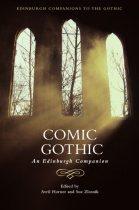
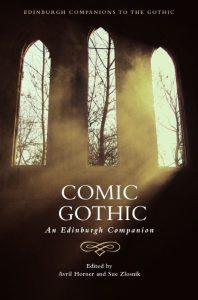 Humour has always been an integral part of Thai horror, a cinematic genre characterized by its internal hybridity and fluidity. Despite some attempts to align local productions with Western or Japanese horror, the majority of Thai horror films continue to mix scares with laughter, frequently featuring the ‘unholy trinity’ of ghosts, slapstick comedy and the kathoey – a Thai third gender category, often depicted in such productions in terms of the Gothic body that is simultaneously the site of ridicule and fear. This article examines the work of two directors who have embraced this approach – Poj Arnon and Yuthlert Sippapak. While Poj Arnon’s films have often been branded as tasteless and nonsensical, each of his 30-something productions has made a healthy profit, attesting to their popularity. In contrast, Yuthlert Sippapak’s works have baffled audiences at several international festivals and the director himself has been promoted as an inscrutable auteur. This article focuses on two major film series by these directors – Hor Taew Tak by Poj Arnon, and Buppah Rahtree by Yuthlert Sippapak. The article uses these films to illustrate a distinction between Thai horror comedies and Thai popular horror films, arguing that the comic elements are an indispensable part of their Gothic framework and a feature characteristic of Thai popular horror film in general.
Humour has always been an integral part of Thai horror, a cinematic genre characterized by its internal hybridity and fluidity. Despite some attempts to align local productions with Western or Japanese horror, the majority of Thai horror films continue to mix scares with laughter, frequently featuring the ‘unholy trinity’ of ghosts, slapstick comedy and the kathoey – a Thai third gender category, often depicted in such productions in terms of the Gothic body that is simultaneously the site of ridicule and fear. This article examines the work of two directors who have embraced this approach – Poj Arnon and Yuthlert Sippapak. While Poj Arnon’s films have often been branded as tasteless and nonsensical, each of his 30-something productions has made a healthy profit, attesting to their popularity. In contrast, Yuthlert Sippapak’s works have baffled audiences at several international festivals and the director himself has been promoted as an inscrutable auteur. This article focuses on two major film series by these directors – Hor Taew Tak by Poj Arnon, and Buppah Rahtree by Yuthlert Sippapak. The article uses these films to illustrate a distinction between Thai horror comedies and Thai popular horror films, arguing that the comic elements are an indispensable part of their Gothic framework and a feature characteristic of Thai popular horror film in general.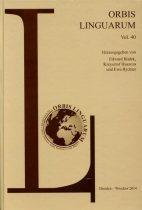
 This article argues that the negative portrayal of medical professionals in contemporary Thai horror is to a certain extent reminiscent of the tensions between the official and popular attitudes to Western bio-medicine and Traditional Thai Medicine (TTM) in Thai society. The article argues that medical doctors, together with other members of the professional community, such as for instance architects, or journalists, represent a relatively high level in the Thai social hierarchy which can be openly criticized without much fear that the films will be cut by censors. Last but not least, the article will look in more detail on Paween Purijitpanya’s debut feature The Body #19 (2006). Set within the less-than-glamorous world of medical professionals, the film toys with the concept of the mental disease (schizophrenia), which in traditional Thai folk medicine has consequently been attributed to spiritual possession. This dual spiritual/medical nature of the mental disease in Thai popular perception, has allowed the filmmakers to create a film that can be seen as simultaneously repeating and breaking the established Thai horror formulas. At the same time, while directing our attention to the notion of disease, the film offers an interesting, though subtle representation of the disintegration of the traditional hierarchical Thai society and its values.
This article argues that the negative portrayal of medical professionals in contemporary Thai horror is to a certain extent reminiscent of the tensions between the official and popular attitudes to Western bio-medicine and Traditional Thai Medicine (TTM) in Thai society. The article argues that medical doctors, together with other members of the professional community, such as for instance architects, or journalists, represent a relatively high level in the Thai social hierarchy which can be openly criticized without much fear that the films will be cut by censors. Last but not least, the article will look in more detail on Paween Purijitpanya’s debut feature The Body #19 (2006). Set within the less-than-glamorous world of medical professionals, the film toys with the concept of the mental disease (schizophrenia), which in traditional Thai folk medicine has consequently been attributed to spiritual possession. This dual spiritual/medical nature of the mental disease in Thai popular perception, has allowed the filmmakers to create a film that can be seen as simultaneously repeating and breaking the established Thai horror formulas. At the same time, while directing our attention to the notion of disease, the film offers an interesting, though subtle representation of the disintegration of the traditional hierarchical Thai society and its values.